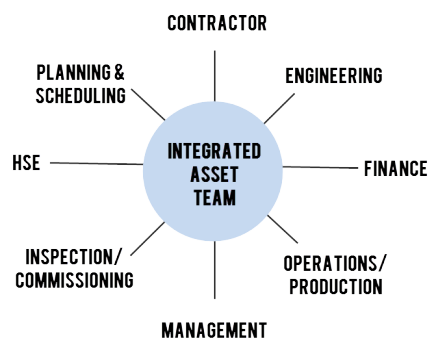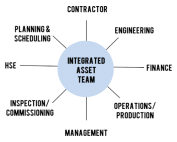Construction Management: A Fresh Look
Construction Management
It can be difficult to grasp the scale and significance of the larger battle when you are hunkered in an isolated trench with bullets flying overhead. Many of us that work in the construction management industry understand this. Still, we ignore the need or fail to take the time to step back from our roles to examine the construction management battlefield. It is a good idea, however, to step out of the trench from time to time and look at construction management from a clearer perspective.
Construction Management Definition
Looking to the fine contributors that built the construction management page at Wikipedia, we can see a general definition. See below.
The definition given above (and this one, this one, and this one) may be adequate for a freshman term paper. But it is general, dry and devoid of the conviction needed to inspire the kind of creative thought that leads to innovation. At least for me. So, I suspect, it isn’t terribly useful for folks in the construction management industry that may be trying to solve problems, win more business, or escape the bullet ridden trenches.
A better way to define construction management is the process of coordinating design, procurement, and construction teams to produce the safest, most reliable, valuable asset for the client while beating schedule and budget.
Construction Management Mission
The construction management description above may sound like a mission or goal of construction management rather than a definition of construction management. It is. You in the construction management industry are incredibly capable, working with your talented teams to build marvelous, utility rich things all the time. You have that down. Rather than resting at that plateau and producing things, it’s time to aim higher and put the client and performance on the front burners. With the client and performance at the center of the mission, construction management professionals will have the mindset that will build a more successful business and brand.
Construction management professionals that take a client centric approach understand that without a client, there would be no project. Moreover, the client centric construction management approach knows that the easiest business to win is repeat business. Since client centric construction management teams understand this, they will go to nearly any length to avoid disappointing the client.
Performance centric construction management overlaps some with the client centric approach, but is more internally focused. Increasing project performance usually means projects are completed faster, with better margins, and higher quality. The performance centric approach drives construction management teams to innovate and progress the industry rather than playing the same ol’ tricks to pad the bottom line. This results in performance centric companies having more longevity, prosperity, and dominance than others.
To further instill the client and performance centric approach to construction management, let’s deconstruct and examine the latter mission/definition laid out earlier in the article through the lenses of the client and the performance centric general contractor.
The first part of the construction management mission is the process of coordinating design, procurement, and construction teams. These are the three pillars of a construction project. Without strength in these three areas, the roof caves in. Without quality engineering, the product is flawed. Without proper procurement, the wrong materials and equipment are bought at the wrong prices and delivered broken to the wrong facility behind schedule. Without proper construction, the material and equipment are assembled poorly. If any of these pillars falter, the project is in serious trouble. Further complicating the process, each of these groups is connected. If Engineering and Procurement don’t coordinate, buyers may purchase too much, too little, or the wrong items altogether. If Engineering and Construction don’t coordinate, the asset is built/assembled incorrectly or in the wrong order. If Procurement and Construction don’t coordinate, material and equipment may arrive late, early, or broken. With this interconnection, coordinating and collaborating effectively is an absolute necessity.
Client centric construction management takes coordination a step further by integrating the client as well. Producing regular reports on progress, submitting designs for approval on schedule in a user friendly format, and being open about progress and stumbling blocks are hallmarks of a client centric construction management plan. Clients appreciate the transparency and involvement as slips, change orders, and overruns can be identified earlier and mitigated before problems become major. This approach pays dividends to the general contractor in the form of client trust and repeat business.
Performance centric construction management seeks to improve the coordination among these groups to prevent the common problems that plague construction managers such as: overruns, engineering rework, procurement delays, change orders, and increased client oversight. Common strategies to achieve this include integrating data to prevent information siloes, hiring engineers who will work closely with procurement and construction, using interface management applications to corral conversations, and creative online bidding tools. These are just a few performance centric strategies to coordinate these teams. There are unlimited tools and strategies and many are quite creative.
The next part of the construction management mission is to produce the safest, most reliable, valuable asset for the client. The key to this portion of the construction management mission is building the most value to the client. Both performance centric and client centric construction management approaches aim to deliver the safest, most reliable asset for the client.
Client centric companies understand that value delivered to the client extends beyond a safe and reliable asset. They deliver value through being trustworthy, transparent, and competent. They strive to be more competent by having the best people, integrating their teams, and leveraging client and supplier expertise. They are transparent by identifying problems, gaps, and unclaimed efficiencies early on and reporting early and often. They are trustworthy by being honest and showing their competency through transparency in everything they do.
Performance centric companies are thorough and efficient in producing the asset. They understand that defined and optimized project processes are the key to efficiency, too. They have strong document control teams armed with good tools. The players in the project have the right information at their fingertips. This means engineers have access to the latest drawings and even superseded drawings, with tools that make it impossible to confuse the two. The information, like drawings and equipment data, flows coherently to procurement and then to construction. Information is processed with defined review and approval workflows. Reporting is consistent, meaningful, and timely. Teams use dedicated communication channels rather than relying on emails and skype. Responsibilities within the project team are well defined. Bids are solicited from competent, approved suppliers and returned in useful formats. Construction teams have materials, equipment, and teams on-site at the correct times. Testing and handover plans are well defined. Operators have handover documentation and operating manuals before operation commences. These are the hallmarks of a performance centric company that will dominate their marketplace.
The final part of the construction management mission is beating schedule and budget. This is terribly important. Nothing is more repulsive to clients than paying contractors that knowingly underbid the project only to recoup through “unforeseen” change orders. That is a dying business model. Client centric companies reject that model and understand that it destroys value to the client, along with their own reputation. On the other side of the coin, clients are increasingly aware of and searching for client centric companies, and are rewarding them with more business. As the industry advances and clients demand tighter budgets, schedules, and more transparency the client centric companies and performance centric companies will continue to win.
If you are interested in implementing a more client centric or performance centric approach to construction management, I encourage you to reach out to us at info@projectools.com or fill in the form below.
ProjecTools Product Information
ProjecTools Client Spotlight
ProjecTools Client Spotlight "I don't see how companies can manage projects like [...]
Standard Project Management Features
ProjecTools subscriptions provide valuable standard features that support projects. ProjecTools standard features are available to each user to complement core application functions and business processes. Utilize the modules below to increase top-down visibility, communication, accountability
Security and Reliability
Users need a secure, reliable environment to access project information and perform work. All applications and client data resides in a private cloud network with data replication and failover to geographically diverse datacenter equipment. ProjecTools provides 99.5% Network Availability
Construction Project Management Services
ProjecTeams is proven for flexible on-site or remote project deployments. Each ProjecTeam specialist has deep work history with a career of improving project execution, information management processes, with tools that make projects efficient, timely, and profitable.
ProjecTools Resources
Spreadsheets and Email as Project Management Tools
Projects have too many moving parts and too many players to be trusting critical data to spreadsheets and emails. You need a spreadsheet reduction strategy.
Project Management Assessment
Project Management Assessment Assess your project management practices against the best project execution teams in the Capital Construction, [...]
Document Management Software ROI
Document management is massively important for engineering and construction projects. Take the approach and use the tools that add the most value.
Aligning Document Control and Cost Control
Align Document Control with Cost Control and create seamless progress and earned value reports to stay on budget and improve cash flows.
ProjecTools Videos, Demos, and Webinars
Optimizing Review and Approval Processes for Engineering
Let’s talk about review and approvals, and closed-loop systems, and how to execute the review and approval processes for engineering and commercial...
The Keys to Successful Document Management
Let's talk specifically about document management software, and the key factors for clean and organized documentation, accessibility, finding a system...
Document Management Software ROI
Document management is massively important for engineering and construction projects. Take the approach and use the tools that add the most value.
Document Distribution and Access for EPC and Construction
Global projects have global teams that need to be in the loop. Cloud technology takes the pain out of giving teams on demand access to project data.







